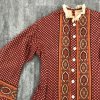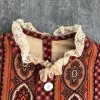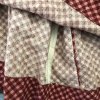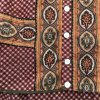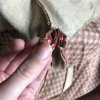persephone60
Registered Guest
So, I have a 19th century garment that I'm pretty sure is pre-1890s, but since I don't specialize in antique clothing, I'm not 100% sure on dating--I'd love to narrow down the decade more precisely. Pretty sure the fabric is wool and that the buttons are newer than the dress (they might be celluloid?).
Let me know your thoughts! Thank you!
Let me know your thoughts! Thank you!


